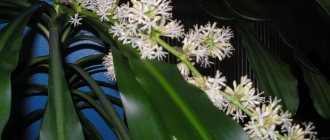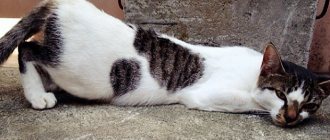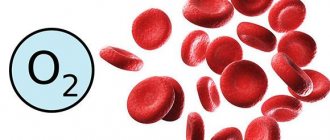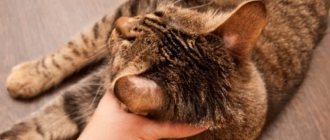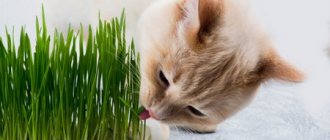July 11, 2016
Not all plants can get along well with a domestic cat. Some will not survive on their own because they will attract your pet's attention with their taste. And some are dangerous (poisonous) for any cat. In most cases, the toxicity of plants repels cats, but it also happens that a pet wants to eat a flower. We have compiled for you a list of plants and the reaction of the cat’s body when consuming them.
The most common houseplants that are poisonous to cats are:
| Azalea - whole plant: vomiting, diarrhea, seizures, heart, kidney and pulmonary failure. | |
| Aloe – diarrhea. | |
| Amaryllidaceae (Amaryllidáceae) – leaves, peduncles and scales of bulbs: allergic dermatitis, vomiting, diarrhea, convulsions, kidney, heart and pulmonary failure, damage to the nervous system. | |
| Araceae (Araceae) – the juice contains oxalic acid: the juice causes burns and causes swelling of the larynx and oral mucosa. Severe swelling can block air flow and lead to death. In case of contact with the eyes - conjunctivitis and irreversible changes in the cornea. | |
| Begonia - the whole plant contains oxalic acid: if swallowed, it burns the mucous membrane of the mouth, causing swelling of the larynx and oral mucosa. | |
| Asparagus, or asparagus: densely flowered (Asparagus plumossus), Sprenger (Asparagus densiflorus sprengery): vomiting, diarrhea, convulsions, heart, kidney and pulmonary failure. | |
| Jasmine gardenia (Gardenia jasminoides): allergic dermatitis. | |
| Geranium, (Pelargonium, Pelargonium), especially blood-red geranium (Wolf's foot) – the whole plant, especially the leaves: indigestion. | |
| Decembrist (Christmas plant, Zygocactus, Schlumbergera, epiphyllum) (Epiphyllum Pfeiffer, Epiphyllanthus Berger, Zygocactus Schumann, Schlumbergera Lemaire) – the whole plant, especially the leaves: laryngeal edema. | |
| Dracaena marginata: swelling of the larynx. | |
| Zamia: allergic dermatitis. | |
| Kutrovye - juice contains a large amount of alkaloids and glycosides: vomiting, diarrhea, disruption of cardiac activity and nervous regulation; cardiac glycosides can cause cardiac arrest. | |
| Peperomia: swelling of the larynx, loss of coordination and acute heart failure. | |
| Ivy (Hedera): Holly, Heart, Ovate, Silver contains a substance that interacts with cholesterol found in red blood cells, causing them to divide: vomiting, diarrhea, seizures, kidney, heart and lung failure. Boston ivy can cause swelling of the larynx. | |
| Sansevieria, or pike tail (Sansevieria): allergic dermatitis. | |
| Evergreen boxwood (Búxus): severe intoxication of the body, even death. | |
| Usambara violet, Saintpaulia: vomiting, diarrhea | |
| Fatsia japonica (Fatsia japonica) – whole plant: disorders of the nervous system. | |
| Haworthia: swelling of the larynx. | |
| Chlorophytum: allergic dermatitis, but not in all cats. | |
| Cyclamen – juice: irritation of the mucous membranes of the eyes, skin burns, vomiting, diarrhea, convulsions, kidney, heart and pulmonary failure. | |
| Cyperus, or satiate, rosemary (Cyperus): vomiting, diarrhea, convulsions, heart, kidney and pulmonary failure. | |
| Schefflera – whole plant: contact dermatitis, irritation of mucous membranes. | |
| All euphorbias (more than 1600 species) secrete a milky sap containing the toxic substance euphorbine: burns, inflammation of the mucous membranes, conjunctivitis, which can lead to blindness, nervous disorders, severe diarrhea. | |
| Hyacinth (Hyacínthus) – pollen, leaves, stems, flowers, bulbs: toxic poisoning, impaired coordination of movements, heart failure. | |
| Iris, also known as iris (Íris) – leaves, roots: vomiting, diarrhea. | |
| May lily of the valley (Convallaria majális): vomiting, diarrhea. | |
| Callas (Calla) - contain oxalic acid: irritation of the oral mucosa, swelling of the larynx, impaired coordination of movements, acute heart failure. | |
| Lily (Lílium) – pollen: swelling of the larynx, impaired coordination of movements, heart failure. | |
| Narcissus (Narcissus) – leaves, peduncles and scales of bulbs: vomiting, diarrhea, convulsions, heart and pulmonary failure. | |
| Snowdrops (Galanthus) - the whole plant, especially the flowers and berries, after the cut flowers stand in water, the poison appears there too. Don't let cats drink from the vase. Flowers and berries cause allergic reactions, digestive system dysfunction, and even cardiac arrest. | |
| Tulip (Túlipa) – pollen, bulbs, leaves toxic: poisoning, impaired coordination of movements, heart failure, allergic dermatitis. | |
| Chrysanthemum (Chrysanthemum): irritation of the oral mucosa, vomiting, diarrhea, convulsions, renal, cardiac and pulmonary failure, allergic dermatitis. |
Potato
Potato stems are dangerous for cats because... they contain glycoalkaloids, in particular solanine and chaconine. These are toxic compounds that have fungicidal and insecticidal properties. In this way the plant protects itself from predators.
These compounds depress the nervous system, causing diarrhea, dehydration, seizures, and sometimes coma and death.
Garden and field plants that are poisonous to cats:
- Spring Adonis (Adonis vernalis) – all parts of the plant
- Aconite, or fighter (Aconítum) - all parts of the plant: systemic toxic effect
- Aquilegia (catchment) – seeds
- Arisaema triphyllum: swelling of the larynx, impaired coordination of movements and acute heart failure.
- Arum (Arum): poisonous due to its alkaloid content.
- Periwinkle (Vínca): hallucinogen.
- Begonia - the whole plant contains oxalic acid: if swallowed, it burns the mucous membrane of the mouth, causing swelling of the larynx and oral mucosa.
- Autumn colchicum (Cólchicum autumnále) – all parts of the plant: allergic dermatitis, toxic poisoning, impaired coordination of movements, heart failure.
- Belladonna (belladonna) - alkaloids are found in all parts of the plant: nausea, vomiting, drowsiness.
- White locust (false locust) (Robínia pseudoacácia) – bark: vomiting, diarrhea, cramps, abdominal pain, heart, kidney and pulmonary failure.
- Henbane (Hyoscýamus): systemic toxic effects.
- Spring whiteflower (Galanthus vernus) – leaves, peduncles, bulbs: allergic dermatitis, vomiting, diarrhea, convulsions, kidney, heart and pulmonary failure, damage to the nervous system.
- Euonymus is the whole plant.
- Biota (Biota orientalis), or oriental thuja (Thuja orientalis): swelling of the larynx, impaired coordination of movements and acute heart failure.
- Hemlock (Cicuta virosa) (gorigolova, hemlock, cat parsley, dog angelica, pig louse, poisonous wech, wood pig, water rabies, omeg, omezhnik, mudnik) – The whole plant is poisonous. Hemlock smells like carrots, and the rhizome tastes like radish. The root resin contains cicutoxin: nausea, vomiting and colic, dizziness, unsteady gait, foam at the mouth. The pupils are dilated, epileptoid seizures and convulsions can result in paralysis and death. 100-200 g of rhizome is enough to kill a cow, and 50-100 g will kill a sheep.
- Hogweed (Heracleum): severe skin burns.
- Three-pointed, holly-leaved maiden grape (tetrastigma, indoor grape) (Parthenocíssus tricuspidáta): laryngeal edema, vomiting, diarrhea, convulsions, impaired coordination of movements and acute heart failure.
- Wolf's bast (common wolfberry, or deadly wolfberry) (Dáphne mezéreum) – highly poisonous bark (bast), leaves, flowers, fruits: systemic toxic effect.
- Helleborus (helleborus, Christmas rose) – the whole plant, especially the root and leaves: irritation of the mucous membranes, vomiting, diarrhea, heart failure.
- Hairy heliotrope (Heliotropium lasiocarpum) – leaves, stems and seeds.
- Geranium, (Pelargonium, Pelargonium), especially blood-red geranium (Wolf's foot): indigestion.
- Wisteria, also known as Wisteria: vomiting, diarrhea.
- Gloriosa: Deadly poisonous.
- Hydrangea - the leaves and flowers contain cyanide ions, which exhibit their toxic effect upon contact with saliva and water: vomiting, diarrhea, trembling, heart, kidney and pulmonary failure.
- Delphinium, also known as larkspur, spur (Delphínium): vomiting, diarrhea, convulsions, heart, kidney and pulmonary failure.
- Datura - alkaloids are found in all parts of plants: nausea, vomiting, drowsiness.
- Fragrant tobacco - alkaloids are contained in all parts of plants: nausea, vomiting, drowsiness.
- Jasmine (Jasmínum) or Mock orange (Philadélphus): systemic toxic effect.
- Honeysuckle (Lonicera): swelling of the larynx.
- St. John's wort (Hypericum): damage to the nervous system.
- Honeysuckle, or honeysuckle honeysuckle, or goat honeysuckle, or fragrant honeysuckle (Lonicera caprifolium)
- Dogwood (Córnus): swelling of the larynx.
- Clematis, also known as Clématis: vomiting, diarrhea.
- Castor bean (Ricinus communis): vomiting, diarrhea.
- Hemp (Cannabis): hallucinogen.
- Horse chestnut, or acorn (Aésculus) - seedlings, nuts, seeds: vomiting, diarrhea, convulsions, heart, kidney and pulmonary failure.
- Crocus, or saffron (Crócus) – whole plant: vomiting, diarrhea.
- Swimsuit (Trollius) – roots.
- Lakonos, or phytolacca (Phytolacca americana and Phytolacca acinosa): vomiting, diarrhea.
- Lysichiton americanum: vomiting, diarrhea.
- Lupine (Lupinus): systemic toxic effect.
- Buttercups (Ranunculus): systemic toxicity.
- Poppy (Papáver): hallucinogen.
- Digitalis (Digitális) – leaves: vomiting, diarrhea, convulsions, kidney and pulmonary failure, cardiac dysfunction.
- Dandelion - the milky sap of old plants is dangerous.
- Mistletoe, or oak berries, or bird glue (Víscum): disorders of the heart and central nervous system.
- Oleander (Nerium oleander) – the whole plant, especially the leaves: systemic toxic effects, cardiac dysfunction.
- Ferns (Polypodiophyta): vomiting, diarrhea.
- Shepherd's Purse or Purse (Capsella)
- Primroses or Primroses (Primuláceae), including primrose (Prímula) – juice: burn and allergic dermatitis.
- Petunias (Petunia) - poisonous alkaloids found in all parts of the plant: vomiting, diarrhea, drowsiness.
- Tansy (Tanacetum) During flowering, tansy inflorescences contain alkaloids (0.04-0.5%), glycosides, and organic acids (tanacetic and gallusic). The plant is toxic due to the presence of thujone.
- Tauride wormwood (Artemisia taurica Willd) – aerial parts.
- Orange tree, also known as bitter orange, bigardia, bitter orange (Citrus aurantium): vomiting, diarrhea, convulsions, heart, kidney and pulmonary failure.
- Meadow lumbago (Pulsatilla pratensis) – juice: extract from the leaves has a strong bactericidal and fungicidal effect, has a sedative effect and can be used as a hypnotic, analgesic and expectorant, stimulates liver function. Used in veterinary medicine. The juice can cause skin diseases.
- Rhubarb (Rhéum) – leaves: systemic toxicity.
- Rhododendron – leaves: cardiovascular disorders, diarrhea and vomiting.
- Fragrant rue, or odorous rue (Ruta graveolens): inflammation and burns of the oral cavity.
- Evergreen boxwood, or buxus (Búxus): systemic poisoning effect, even fatal.
- Tobacco (Nicotiana) – leaves: laryngeal edema, impaired motor coordination and acute heart failure.
- Yew berry, or green grass, negtyuchka (Caucasian), mahogany (Táxus baccáta) – bark, leaves, seeds: vomiting, diarrhea, acute heart failure.
- Physalis: vomiting, diarrhea, convulsions, cardiac, renal and pulmonary failure.
- Chlorophytum: allergic dermatitis, but not in all cats.
- Hellebore (Verátrum) – leaves, roots, seeds: vomiting, diarrhea, convulsions, heart, kidney and pulmonary failure, even death.
- Celandine, or Warthog (Chelidonium) - contains alkaloids: homochelidonine, chelerythrine, sanguinarine, protopine, etc.: convulsions, increased intestinal motility and salivary secretion, hallucinations. In livestock, celandine causes poisoning and severe inflammation of the stomach and intestines.
Crocus
Autumn and spring crocus are harmful to cats. In the second case, consumption of the plant can cause gastrointestinal upset, which is manifested by vomiting and diarrhea.
If an animal eats a crocus that is in color in the fall, the pet may experience not only vomiting, but also more serious problems, such as respiratory failure, gastrointestinal bleeding, and kidney and liver dysfunction.
Another danger is that visible symptoms and deterioration of the condition may occur several days after poisoning. At the first signs, you should immediately contact a veterinarian.
Plants that are safe for cats:
bamboo, banana, bauhinia, royal begonia, pride jasminoides, gloxinia, cinnamon jasmine, calathea, callistimon, camellia, cryptanus, crossandra, croton, lamprant, amaranth, nemotanthus, neurophlepis, nephrolepis, cucumber, Brazilian orchid, sedum morgana, yellow pachystachys, pellionia, piperomia, salvia brilliantis, sarracenia, stephanotis profusely flowering, streptocarpus, tradescantia, date canarian, haworthia, chametorrhea, chamerops, chlorophytum, xavea, hoya, epipremnum, episcia, aeschymanthus rooting.
If you don’t want to part with your home flower and at the same time protect your cat, you can prepare a special spray and spray the soil in the pot with it.
For the spray you will need:
- spray bottle;
- 60 g water;
- lemon essential oil;
- wild orange essential oil;
- lavender essential oil.
Cats really don't like the smell of citrus fruits and are unlikely to come close to a sprayed flower. As for poisonous plants, we strongly recommend putting them out of reach of the cat or getting rid of them altogether.
Tags: Safe Home
What to do if your cat stubbornly chews unsafe greens
Your furry pet needs to be weaned off the habit of chewing plants. The owners will need a little patience and time. The most important thing is to choose a balanced diet. Your cat should always have clean water and nutritious food rich in vitamins. Be sure to give your pet his favorite grass: sprouted oats, catnip, wheatgrass. You can buy them at a pet store.
Important! All flower pots must be removed where the cat cannot reach them. You can hang them on the walls in flowerpots, place them on a balcony, mezzanine or top shelves.
When the cat goes to the flower and chews it, you need to spray it with water from a spray bottle. Pet stores sell special repellers. The pet will quickly understand that chewing flowers is punishable.
If a cat chews a poisonous flower, there is no other option but a spray bottle
The best way to ensure that both the wolves are fed and the sheep are safe is to maintain order and cleanliness in the house. To save the flower and not harm the cat, you need to hide dangerous flowers away. You can offer your cat green sprouts of young oats for chewing.
Rhubarb
The leaves of this plant are harmful to cats because they contain a glycolipid that causes severe gastrointestinal disorders. Large amounts of oxalic acid and oxalates lead to severe symptoms of intoxication, in particular burning in the eyes, swelling of the larynx and difficulty breathing, and in severe cases – to kidney failure and convulsions.
- Author: iarriba
Rate this article:
- 5
- 4
- 3
- 2
- 1
(0 votes, average: 0 out of 5)
Share with your friends!
Tansy
Tansy, or wild rowan, is a perennial plant that has a strong, distinctive odor, so cat poisoning is unlikely. Extracts from the plant are used as a dietary supplement for better digestibility of feed.
However, those specimens that grow on the site pose some danger due to the high content of thujone, alkaloids, glycosides and organic acids. The entry of these substances into the cat’s body can cause disruption of the central nervous system. Symptoms include anxiety, severe agitation, which turns into depression, movement disorders, and loss of appetite.
Lantana
Lantana is considered a weed in Australia. However, in other countries it is grown as a houseplant. This is a colorful plant that is extremely poisonous to cats and dogs. Therefore, it is better to refuse the flower if you have a pet.
Symptoms of poisoning: depression, vomiting, diarrhea, weakness, loss of appetite, shock, bloating, paralysis, possible liver failure.
LiveInternetLiveInternet
Tuesday, April 29, 2014 07:12 + to quote book I don’t know about you, but for me the month of May is associated with the flowering of lilacs. At the mere mention of this shrub, my imagination immediately pictures childhood and the front garden, where every year in the spring the air was filled with the wonderful aroma of enchanting lilac flowers, which attracted the gaze of passers-by from afar. Even now, I love to sit in the evenings in the gazebo located under a lilac bush and admire the romantic atmosphere. I am sure that lilac heals with its beauty and aroma, it enchants and bewitches. Many people value and love lilac only for these qualities, and few people use it for medicinal purposes.
Doctor Lilac himself is a real healer; she is not only a decoration of parks and garden plots, but also has excellent healing properties. Not only lilac flowers, but also leaves, bark and buds can be used as raw materials for preparing medicinal tinctures, syrups, ointments and tea. Lilac flowers are collected in mid-May during budding, and the inflorescences are best cut off along with the branches. The raw material from the inflorescences should be dried in bunches, hanging in a dark and well-ventilated place. Leaves and bark are collected from young shoots and dried, spreading in a thin layer on a dry surface that is not exposed to direct sunlight. Dried parts of lilac retain their beneficial properties for 2 years. People have known about the benefits of lilac for a long time. So in Ancient Rus', the most popular remedy for the treatment of radiculitis, joint pain, bronchitis, colds, bedsores and heel spurs was a tincture of lilac flowers. This tincture was prepared according to the following recipe: you need to take one glass of lilac flowers, put them in a 1-liter jar and fill them with half a liter of vodka. Close the lid of the jar tightly and leave it to settle for two weeks in a dark place. The contents of the jar should be shaken once a day. After 14 days, the tincture must be strained and put in the refrigerator, tightly closed with a lid. If you or someone close to you gets a cold or bronchitis, pour some water into a glass and add 30 drops of lilac tincture. If you experience pain in the joints, lower back, or suffer from heel spurs, take out the tincture and use it to prepare compresses for sore spots. Wipe the body of the patient who is immobilized and forced to lie in bed with the tincture to prevent bedsores from forming. Lilac tincture is good for sore throat, laryngitis and gum inflammation. Take 10 ml of tincture and dilute it with 100 ml of warm water, gargle and gargle with the prepared solution several times a day. For inflammatory kidney diseases, cholelithiasis and cystitis, an infusion of lilac leaves and flowers is used. To prepare it, take lilac leaves and flowers at the rate of 2 tablespoons of raw material per glass of water, bring to a boil and leave to brew for 3 hours. Take one tablespoon of infusion before meals for two weeks. Rub fresh lilac leaves into your palms and apply them to your head to get rid of migraines and eliminate noise in your head. Lilac leaves, as well as plantain leaves, are used to treat wounds, cuts, bruises and bruises. Compresses with tincture of lilac flowers heal cracked feet, calluses and corns. Regularly cleansing your facial skin with alcohol tincture of lilac can permanently solve the problem of pimples and acne. And for those who suffer from diabetes, a tincture of lilac buds will help improve their health. Take 2 tablespoons of lilac buds and pour half a liter of boiling water over them. After the decoction has infused, drink 1 tablespoon of it before meals. Lilac bark is used to treat dermatological diseases. Clean lilac bark is applied to areas of the skin affected by fungi and secured with a bandage. Many people suffering from lacrimation and pain in the eyes do not even know how beneficial tea made from lilac flowers is for eye health. Collect fresh, unopened lilac buds and brew them as you would any tea. Soak cotton pads in lilac tea and apply them to your eyes. Repeat this procedure several times throughout the day to restore your eyes to health and visual acuity. Tea made from young lilac leaves, collected during the flowering of the plant, makes breathing easier. It is recommended to drink it for shortness of breath and bronchial asthma. It is enough to put 2-3 leaves in a teapot to dilate the blood vessels of the bronchi and lungs. Lilac essential oil is widely used in the cosmetics industry for the production of perfumes, eau de toilette, colognes, deodorants, creams and other products. In its healing and perfumery qualities, this oil surpasses even rose oil and is very popular among aromatherapy connoisseurs. Drinking tincture of fragrant lilac flowers in large doses is contraindicated, as this can lead to poisoning. In addition, lilac can cause aggravation of allergies in people suffering from hay fever. source Refresh yourself with taste
Some housewives manage to make jam from lilac flowers. It tastes sweet with a bitterness, so it is very reminiscent of buckwheat honey. With a characteristic dark color, this jam has a subtle lilac aroma - but if your guests do not know what you are serving for tea, they will continue to sincerely consider the delicacy to be a “bee product”. Many will ask, is it possible to eat lilac - after all, it is poisonous?.. However, back in the Renaissance, the great physician Paracelsus came up with a brilliant formula: “Everything is poison and everything is medicine. Only the dose makes a substance a poison or a medicine.” We obviously won’t eat much of the medicinal tincture or jam, right? Moreover, even animals are not averse to feasting on double flowers: for example, some cats happily gobble up lilacs on both cheeks. Perfume find
Lilac skin mask: pour 50 grams of lilac into a thermos with boiling water and leave for an hour. Then add two tablespoons of starch or oatmeal to thicken - until the consistency becomes similar to viscous jelly. When it cools down, apply to a previously steamed face or hands. After 10 minutes you can wash it off. Lilac tincture is used to wipe the face for acne. To give your face a delicate look, use lotion made from lilac flowers. Flowers should be white or pale lilac. Pour two tablespoons of thoroughly washed flowers with 100 grams of vodka. Leave for a week in a dark place. Use the lotion morning and evening until it is completely gone. Lilac hair rinse is a wonderful product that allows you to get rid of dandruff or excess oil on the scalp, giving your hair shine. To do this, you need to prepare a decoction of lilac flowers and use it at once. May entertainment
“We won’t pick lilacs to guess about fate...” is sung in an old song. Why not? Of course, no one forces you to take this completely seriously, but why not try your luck and have fun, like our grandmothers did? After all, if you are going on a picnic or barbecue with the whole family, you can arrange a competition or at least temporarily keep your noisy fidgets occupied with something. Young ladies use lilacs for fortune telling: it is believed that if you find a five-petalled lilac flower, you will be lucky. White lilacs are particularly abundant in such flowers; purple ones are much less common. Having found such a flower, you need to dry it in a book or eat it for good luck. But it happens that lilac flowers have only three petals instead of four. They are generally considered unlucky, so there is no need to save them for good luck. You can tell fortunes on lilac flowers during the full moon. Pick 8 flowers during the full moon, hold them in your hand and carry them home. You can open your hand only by placing flowers under the pillow. Without looking at them, go to bed - and before going to bed, make a wish. You can find out whether it will come true or not in the morning by the appearance of the flowers. If they have retained their color, then yes, if they have turned yellow, you need to try your luck again. source
| Categories: | alluring world of flowers |
Tags:
lilac treatment beauty tincture jam
Cited 119 times Liked by: 44 users
Like share
0
Like
- 44
I liked the post - 119
Quoted - 1
Saved
- 119
Add to quote book - 1
Save to links
Liked44
0
Rubber trees
Some types of rubber trees, such as Japanese, Chinese, jade and Indian, are toxic to cats and dogs.
Curly and leafy varieties. Sprouting parsley seeds using aloe
Has a strong marriage cracked? Iker Casillas divorces wife Sara Carbonero
What offense did Alexandra Ursulyak not forgive her first husband and filed for divorce?
Symptoms of poisoning: loss of appetite, drooling, vomiting, diarrhea, depression, skin irritation.


